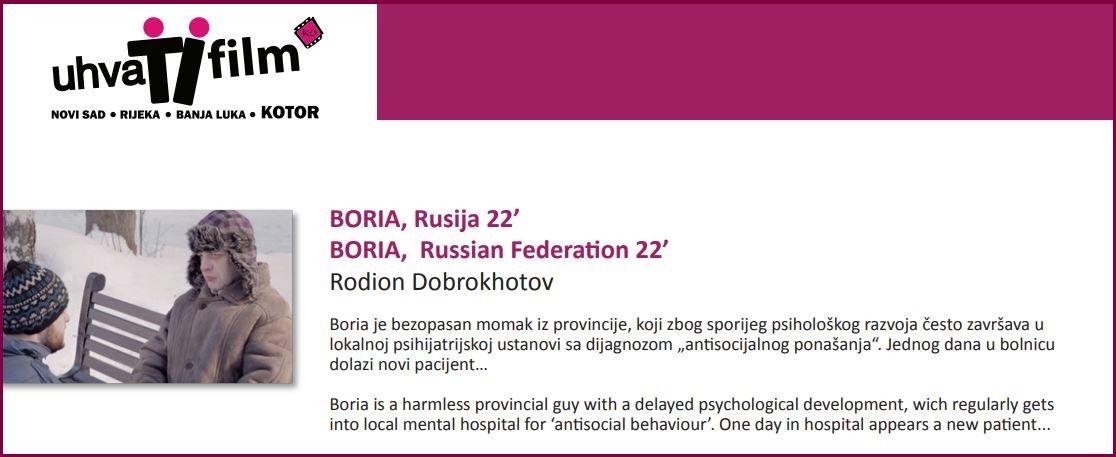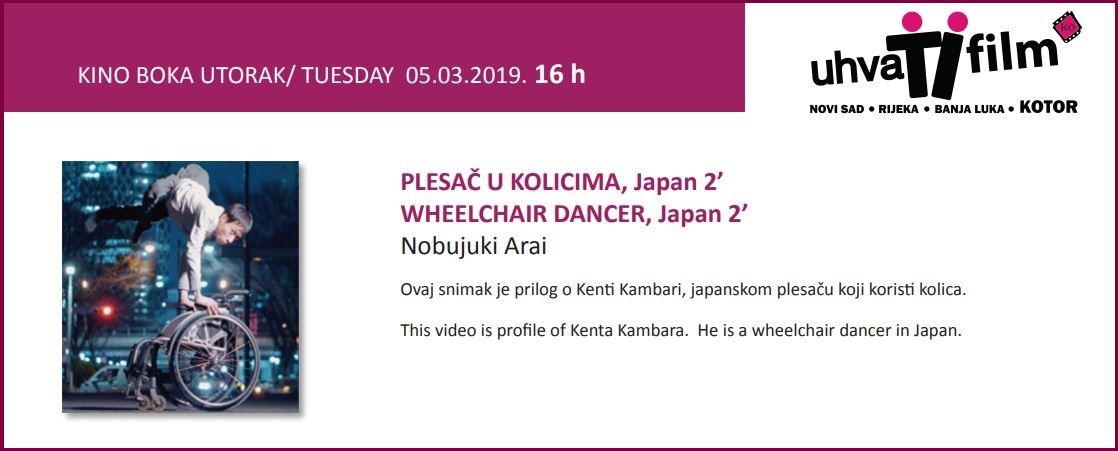Displaying items by tag: kotor
March 5, 2019 - Kotor Municipality, the Women's and Peace Education Center "Anima" and the Women's Rights Center have organized a program of marking March 8, International Women’s Day, emphasizing a great jubilee - hundred years since the first protest gathering in Montenegro organized by women, held in Kotor in 1919.
100 years since the first march on March 8 in Montenegro- March 8 Conference 2019 Program:
With a big carnival parade which took place on the main road, the trial and burning of the carnival last night in Kotor ended the Winter Carnival parade.
To his last walk, Montanjaro was accompanied by the city music from Djenovici and Kotor, the majorettes "Festa", "Alisa" and "Lili" from Herceg Novi, "Infinity dance studio", Carnival group “Karampana”, “Za despet” and “Kosmopolitanke”, Lastva carnival, children from kindergarten "Radost" and "Osmijeh", "University of Art" from Belgrade, “Retirement home” from Risan, “Theater 303”, masks from Kotor Gymnasium, Maritime faculty and Kotor primary schools.
The famous court sentenced Djudic Ultimo Montanjaro at Trg oruzja, a culprit for all the troubles that Kotor faced in the last year. He was burnt at Mace after the court decision with fireworks.
(Photo: Krsto Vulovic)
The festivity then moved to the main city square with Terrarosse and Goran Karan.
The trophy for the best mask was given to the Carnival group “Karampana” for the mask “The Dragons from Pestingrad”, “Rocher Ferrero” and “Residents of the Old Town”.
The trophy for the second place was won by the Carnival group “Za Despet” for the mask “See Venice and die, see Kotor and live”.
“Cosmopolitan women” with a mask “Exotic trip” won the trophy for third place.
Transitional Cup this year was handed over from the carnival Group “Za despet” to “Karampana”.
The cup for the largest mask with 660 participants was given to the children of JPU "Radost", and the organizer JU Cultural Center "Nikola Đurković" decided to award them also with a special prize of 500 euros.
Prizes for the contribution to this this year's carnival were given to: private kindergarten "Osmijeh", Elementary schools: "Njegoš", "Veljko Drobnjaković" from Risan, "Nikola Đurković" from Radanovici, "Ivo Vizin" from Prcanj, University of Arts from Belgrade, The Retirement home “Grabovac” from Risan, the City Music from Djenovici and Kotor, Kotor Gymnasium, the Faculty of Maritime Studies and the Theater 303. Special prizes from the organizers in the form of excursions were received by the students from the Kotor Gymnasium and Primary Elementary Schools, and the guests of the Retirement home from Risan will receive a concert as their present. The best masks in the category of individual masks were awarded to the “Lord of Darkness”, with the trophy during the carnival. The organizer of the Traditional Winter Carnival is JU Cultural Center "Nikola Đurković" Kotor, co-organizer is the Tourist Organization of the Municipality of Kotor, partner is NGO "Festa" Kotor, and is sponsored by the Municipality of Kotor.
For more information please follow TMN’s dedicated page
Text by Vijesti online, on March 4th 2019, read more at Vijesti
04 March 2019 - The first International Film Festival “Uhvati Film Montenegro” (English: “Seize the Film” Montenegro) will be held on March 5 and 6 in Kotor. The opening ceremony of the Festival, film screenings and the discussions are planned for Tuesday, March 5 at 4 pm (at Cinema Boka) and March 6 at 12 pm (at the Solidarity Gallery in the Old Town of Kotor).
As the director of the festival Aleksandra Božović explained for TVCG, film festival Seize the Film is part of the regional network Film festival Seize This Day With Me/Seize the film, which has been held for the past 16 years in Novi Sad, Rijeka and Banja Luka, and this year it comes to Montenegro.
According to its organisers, the Film Festival Seize this Day with Me - Seize the Film includes screenings of foreign and domestic films on the topic of the lives, activities and achievements of people with disabilities and the following programs: film workshops, forums/discussions with the filmmakers and actors who appear the films, a seminar for journalists and students of journalism, exhibitions, performances, etc… in which people with disabilities participate.
16 films from 13 countries (among which are Japan, Italy, Argentina, Spain, Slovenia, Croatia, Turkey, Russia, Germany, Serbia) will be screened at the Festival in Kotor and they are selected from the program of the Novi Sad Festival 2018.
The festival features 16 films about people with different types of disabilities, different age, social, national, gender structures. It is this diversity that gives a broader picture of the situation of persons with disabilities, so it is possible to notice differences in approach and position, but also similarities.
The first International Film Festival Seize the Film Montenegro will be opened with the Japanese short film "Wheelchair dancer".
"The film projections are preceded by a panel discussion on the participation of persons with disabilities in culture, on institutions’ accessibility in regards to people with disabilities, but also on content, as well as how people with disabilities are displayed in movies and in the media," Božovic explained. The panel discussion will be organized in Kotor on March 5, starting at 12 pm in the Solidarity Gallery in the Old Town of Kotor.
"Guests of the festival and panelists will be representatives of the public sector, media houses, artists, representatives of non-governmental associations both from the country and from abroad," said Božovic.
As explained by the festival organisers, the goals of the Festival are: “informing the public about the lives, activities, positions, and accomplishments of people with disabilities, recognizing one’s own identity and potential, facilitating a better understanding and acceptance of differences, and influencing the media to more adequately follow activities and events in which people with disabilities participate”.
The Film Festival has, is in its 16 years of existence, attracted the attention of numerous media outlets, and, as a topic, it has had an everyday presence in both printed and electronic media.
The festival is organized by the non-governmental Art Association 365 in partnership with Association of Youth with Disabilities of Montenegro and supported by the Ministry of Culture of Montenegro and the Municipality of Kotor. The festival is supported by the Cultural Centre Nikola Đurković Kotor, the Cultural Centre Novi Sad, as well as the partner organizations from the region AS Parnas Novi Sad, Spirit Rijeka Association and HO Partner Banja Luka.
March 4, 2019 - The traditional Kotor Carnival was held on Sunday for the 501st time along with the burning of the culprit for all the problems of the city and citizens in the previous year. Đudić Ultima Montagnaro, formerly accused of nine counts of the indictment, was missing in flames, and the defense was not able to release him.
February 28, 2019 - Excessive urbanization and some key government plans are a severe threat to Boka Bay, according to UNESCO and ICOMOS experts in the Report on the State of Natural and Cultural Historical Area of Kotor, based on the findings of a joint reactive mission visited Kotor at the end of October last year.
Milica Nikolic: We were looking for a Reactive UNESCO / ICOMOS Mission to Get Concrete Recommendations
February 25, 2019 - Orahovac is a place in Kotor Bay, which stretches from the village of Ljuta to Perast. The name of the site is first mentioned in the 15th century. Like most settlements along the Bokelian coast, and Orahovac exists as Gornji (upper) and Donji (lower) - the first was formed the settlement in the hinterland, and later the urban area along the coast. Today, it is just the coastal part of Orahovac - the center of the settlement and the village Drazin Vrt, what we read in the area, while most of the upper settlement is left behind preserving only the outlines of the former cultural landscape. Our host in Orahovac is Professor Dr. Ilija Lalosevic, an architect.
"At the time of Old Zeta, Orahovac was the principal and included Donji Orahovac, Drazin Vrt and Glogovac, if we are talking about the seafront. Orahovac once belonged to the Perast municipality, and we know that Glogovac was part of it, by notary records from the Venetian period. As far as Gornji Orahovac is concerned, we have a whole range of hamlets - the Velje Selo, the largest, then the Kljavici, Jezevici, Ubalac and Velinici. What we see today along the shore is therefore only a small part of the settlement territory, which inland goes all the way to Krivosije, and in one part even borders with the Municipality of Niksic and the Municipality of Cetinje - the villages of Grahovo, Zalazi and Cuce. Of course, the older settlement is Gornji Orahovac. Along the coast, as well as in other parts of the Boka Bay, such as the Stoliv or Prcanj, at first were just objects related to sea activities, while the majority of the villages were in the background," explains Professor Lalosevic.
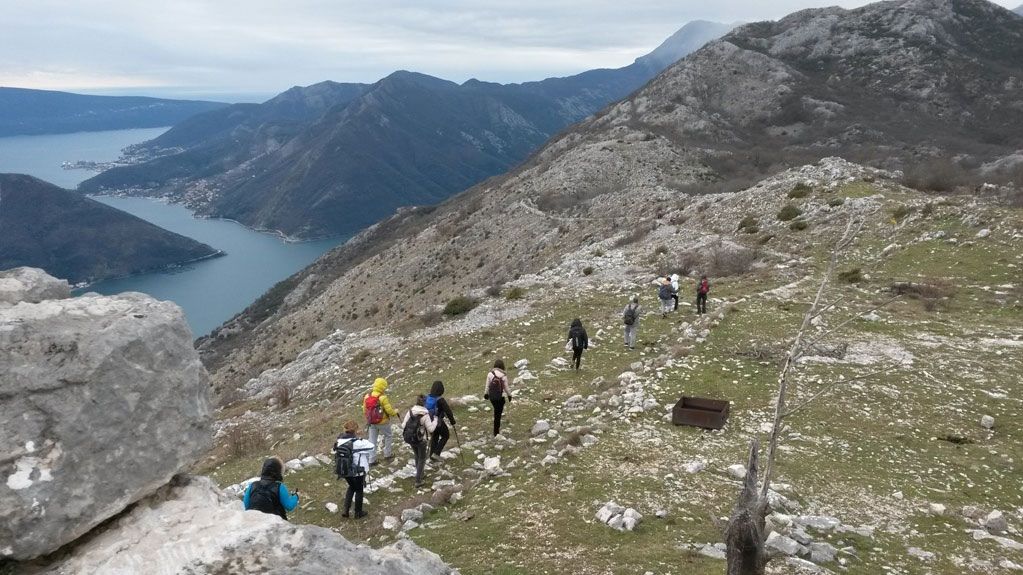 Copyright: www.dan.co.me
Copyright: www.dan.co.me
From 1482 to 1684 Orahovac was under the rule of the Ottoman Empire. It was freed along with Risan and other places under Turkish rule, up to Kumbor. "At that time, the inhabitants began to be more involved in maritime and commerce, which meant the spread of settlements along the coast. Although Orahovac in the past was primarily perceived as a settlement of farmers and fishers, it was significant in the maritime sector and especially in the trade. Because of the connection to the hinterland, this place was the door of Montenegro to the sea - the area of Cuce gravitated to Orahovac. Therefore, after liberation from the Turks in the 17th century, beside Kotor and Risan, the one in Orahovac was the third market in Kotor Bay. For this purpose, the whole network of paths has been made, as evidenced by the documents available in the Historical Archive in Kotor," explains architect Ilija Lalosevic.
Orahovac is today one of the few places along the coast of the Boka Bay where you can still feel the authentic culture of life. The reason for this, above all, lies in the fact that the cultural landscape along the coast is still quite well preserved of the pressures of excessive and inadequate urbanization. "In comparison with other places in Boka, we can say that Orahovac is well preserved, especially part along the coast with old, stone houses. After the earthquake in 1979, some buildings were built that are not very close to the ambience, but the town mostly preserved the character and urban matrix, characterized by smaller buildings and a lot of greenery. The relationship with the coast, the sea, the Mandraci has been preserved, we have kept the beaches. We have a tourist resort that we did not want, against which the locals even managed to compete at the session of Kotor Municipality in the 1990s, but it was subsequently built. It is the Synthesis Complex, which, as we would say, is seen from the plane. We have several dense urban angulations that are not in the character of the matrix, but it is still negligible when we look at what has happened in the area of Dobrota, Kostanjica or Prčanj."
Gornji Orahovac is almost completely abandoned today. "According to some data, Orahovac had almost 1,000 inhabitants in its "golden age", in the middle of the 19th century. The village was very populated; each household had about ten members, especially in the largest hamlet of Velje Selo, which had thirty houses. Gornji Orahovac became abandoned after the Second World War when emigration took place. Today there are no permanent residents, and part of the houses is preserved only in Ubalac settlement, to which, thanks to the efforts of the locals who are still returning to the hinterland, especially the teacher Mr. Abramovich, a road was made. This route comes from the hinterland of Risan, from the locality of Kalacka Voda. To other villages of Gornji Orahovac, there are no roads, and they are abandoned completely thirty years ago," says Professor Ilija Lalosevic.
Today, Gornji Orahovac is known primarily as a popular destination for alternative tourism, hiking, and mountain-climbing, which brings us to the sad fact that this part of Boka Bay has met more tourists than residents. "There are plenty of domestic and foreign guests, as well as my colleagues, who visit Gornji Orahovac, primarily within walking and hiking trails. I was there last time in 2005 when we prepared the exhibition "Orahovac - a village on our conscience" realized by Jadran Art from Perast and the former Regional Institute for the Protection of Cultural Monuments. Except for the needs of this exhibition, some ethnologists from the University of Belgrade were also involved in the research. While we were engaged in the Regional Institute, colleague Aleksandra Kapetanovic and I started work on collecting materials - shooting old houses, after which the rural architecture of Gornji Orahovac was not deeper studied," Lalosevic explained.
In anticipation of some better times for the legacy in the hinterland, and Orahovac, as well as other places along the coast, today mostly lives from tourism. However, the site has managed to preserve a part of earlier economic activities. "We in Orahovac still have fishers who are engaged in fishing in the old, traditional way. Agriculture, because of the terrain configuration, has never been specially developed but we're cattle breeding. Unfortunately, this activity is dead. As far as tourism is concerned, Orahovac is not a place that characterizes masses. The capacity is primarily directed towards family tourism, which is why Orahovac attracts guests seeking peace and rest and the true meaning of that word. Along the coast, we have several wonderful beach bars, which are embedded in the ambience and are characterized by a lot of greenery. I think peace and harmony are what attracts tourists to Orahovac. Earlier, most of our guests come from Belgrade and Novi Sad, and now most of our guests come from Western Europe, Germany, and France," says our host in Orahovac, architect Ilija Lalosevic.
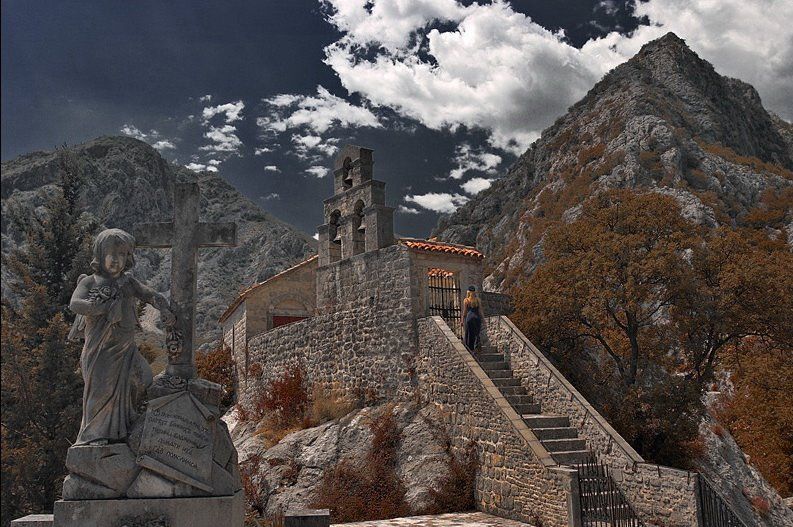 The church of St. George on the rock Stanac, Copyright: Portal Beogradska Nedelja
The church of St. George on the rock Stanac, Copyright: Portal Beogradska Nedelja
When it comes to the cultural heritage, the most important monument of Orahovac is the church of St. George. Its architecture is not impressive, but its position. It is located on the great natural rock of Stanac. The chapel on the site of today's church altar dates from the 13th century, while the rest of today’s church was erected in the 19th century.
Today, in Orahovac you can visit the Bajova kula tower, a place where the famous Montenegrin warrior Bajo Pivljanin once operated. You can opt for one of the hiking trips in the hinterland, or enjoy the pleasant seafront ambiance, with friendly hosts and hard working fishers who continue to sail on the wooden boats, using the fishing tools of their grandparents.
February 22, 2019 - Kotor Winter Carnival Festivities begin on Saturday, February 23, at 6 pm on the main square of the concert of the Klapa "Contra" - the Organizing Committee announced.
19 February 2019 - According to the investment and business plan of the company "Luka Kotor" A.D. (English: “Port of Kotor”) which is majority owned by the Municipality of Kotor, in the next five years the development of port infrastructure foresees investments of 4.678.440,00 EUR while the construction of pylons is the main and most expensive project worth 1,5 million EUR, the realization of which is planned in 2019.
According to the executive director of the company, marine captain Branko Kovačević, the implementation of the five-year investment plan will provide an amount of 1,1 million euros from the loan, and the rest will be the company’s own funds.
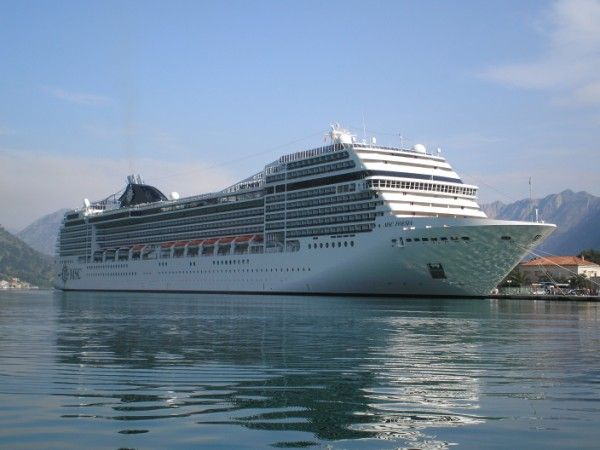
“The most important project is the construction of pylons, that is, the extension of the operational coast, which involves the construction of four pylons with a concrete block at about 80 to 100 metres from the beginning of the operational coast. This would create the conditions for the 330-meter-long mega cruiser to be connected to this site because boats up to 300 metres long can be connected, but with a limited bow that should not exceed eight metres," said Kovačević for Daily Newspapers Dan.
He emphasized that the realisation of this project is crucial because more and more boats are being built for the transport of tourists, and within the next year, 22 mega cruisers with a length of 330 metres will appear on the world market.
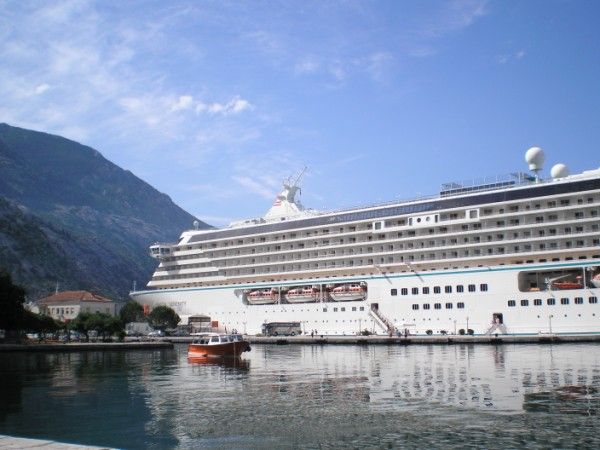
“The construction and putting into operation the pylons is one of the priority conditions for Kotor Port to be competitive for unlimited quantities of ships and to be operational throughout the year for mega cruisers. This investment is significant not only for Kotor but also for the entire state because the Port of Kotor is a gateway to Montenegro. Tourists from cruisers visit all interesting destinations, starting from Cetinje, Skadar Lake, Žabljak, Bay of Kotor, and this is a unique promotion of Montenegro in the world. We already have an announcement from one agency for the next year that, if we finish everything according to the plan regarding the construction of the pylon, one such Kotor mega cruiser will be the starting port for its first journey,” emphasized Kovačević.
Kotor is a cruising destination which is continuously gaining more popularity, which is confirmed with the reservations for the current year for the arrival of 530 cruisers. There are already positive predictions regarding the Port for the year 2020, and it is currently confirmed that the “Ancient City of Boka” will be visited by 478 boats next year.
Source: Boka News
February 19, 2019 - The old road Kotor- Njegusi-Cetinje presented the most important Montenegrin architectural and infrastructure project built at the end of 19 century. Unfortunately, because of the need for a faster road, the part from Njeguši to Cetinje is destroyed and could hardly be reconstructed to once again show the amazing skill of its constructor, engineer Josip Slade.
Slade came to Montenegro in 1877, and already in 1878, he designed and built the road from the Austrian border over Kotor to Cetinje via Njegusi. The second stock to Kotor with the famous 25 serpentines was completed in 1884. Recently the road is paved, some places expanded, but basically remained almost identical to the first built version.
There were recently some ideas to reconstruct the famous 25 serpentines, but this idea came to the strong resistance of experts and NGOs dealing with natural and cultural heritage protection.
17 February 2019 - The reconstruction of the indoor swimming pool "Nikša Bućin" in Kotor has reached its final phase. Minister of Sports and Youth Nikola Janović said that the Kotor pool is a symbol of Montenegrin water polo and swimming sports, and that it has huge importance for the Montenegrin sport, as well as for children and youth throughout the Bay of Kotor.
"I am one of those people who started their first career adventure in this very pool. That's why I know its significance and its potential. Part of the policies of the Government and the Ministry of Sports and Youth relate to the establishment of sports infrastructure in every city, in every place where it is possible to do so. By reconstructing this pool, water polo returns to Kotor," said Minister Janović.
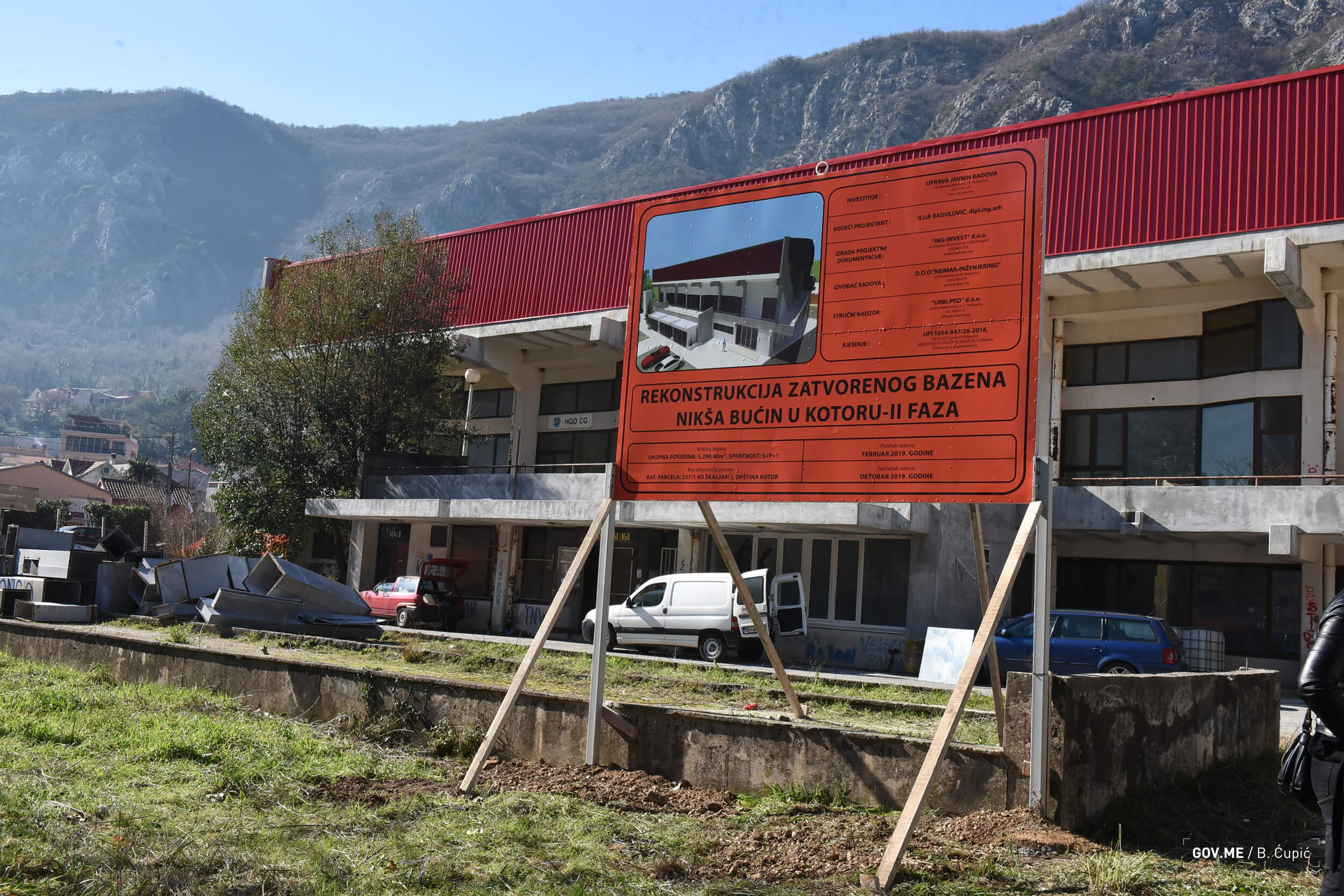
He added that the sports facilities will be reconstructed or built throughout Montenegro and that the Ministry will continue with precise policies and measures from now on - that the sport comes to life in every Montenegrin quarter, in every settlement.
The director of the Public Works Directorate, Rešad Nuhodžić, said that the Government provided all the money needed for the next stages of the reconstruction of this pool and that the Public Works Directorate will ensure that the works will be completed within eight months, as foreseen by the planned period of development.
"As we promised during the conclusion of the contract on the start of the second phase of the reconstruction of the pool in Kotor, today Minister Janović and I visited the construction site and officially held the final meetings with both the contractor and supervision unit. Now it is time for us to finish the reconstruction in the deadlines agreed upon, which is until the end of this year, and make this pool operational," said the director of the Public Works Directorate.
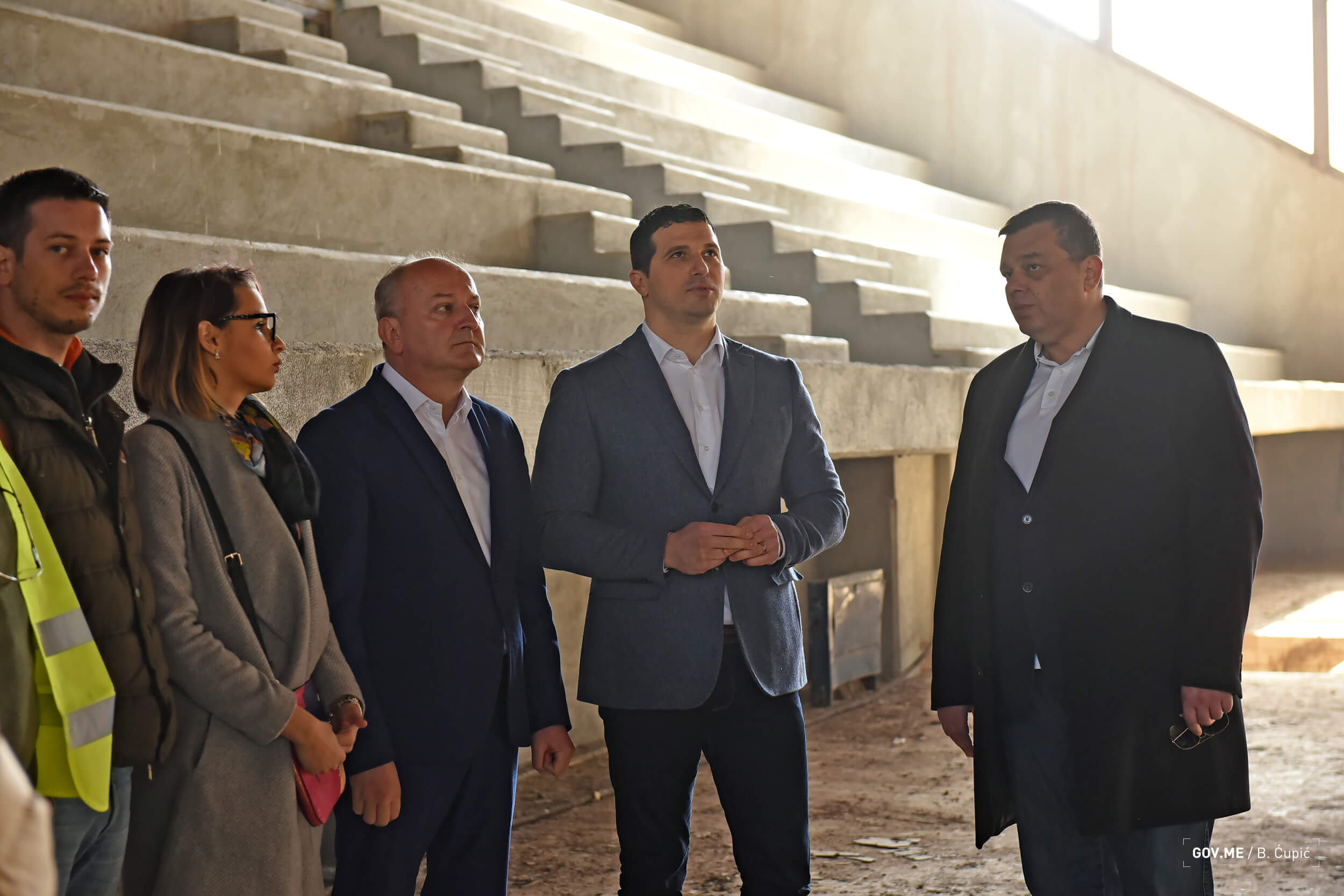
He added that it is particularly satisfying that this is an object that, in addition to water polo players, can be used by the citizens of Kotor, which is an additional motive for completing the works in time and in full.
"What I will particularly insist from the position of Director of the Public Works Directorate is that the works are completed within the agreed time and that their quality will be in accordance with the highest standards," said the Director of Public Works.

